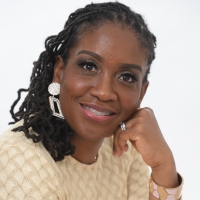
Name
Paula Littlejohn
Name of Supervisor
Dr. Brett Finlay
Degree
PhD
Year of Study
4th
Program of Study
Microbiology & Immunology
Department
Faculty of Science, Michael Smith Laboratories
What motivated you to join the Social Exposome Cluster?
I was first introduced to the SEC by my supervisor, who invited me to one of the seminars. I immediately knew that I wanted to be a part of the cluster and asked how I could join. The SEC’s focus aligns perfectly with my current and future research interest. The SEC is also a great place to learn, train and collaborate with other trainees and faculty interested in early life exposures and their impact on disease later in life.
What are you currently working on in your research? How does it relate to the Social Exposome Cluster?
I currently study how early life exposure to micronutrient malnutrition impacts the double burden of disease over the life course. My work relates to the “intrinsic response” research theme to understanding how early life nutritional experiences gets under the skin to cause disease later in life.
What excites you most about your research?
The discovery! It’s widely accepted that early life undernutrition plays a role in later life disease; however a model that looks at this over the life course doesn’t exist to my knowledge. I am excited about the model I have developed and the potential it has to answer questions we have not been able to before and to begin to link the early life microbiome to non-communicable disease, which my supervisor believes may be “communicable” after all.
If you could collaborate with another researcher in the cluster, what kind of research expert would they be and why?
I am currently collaborating with the Kobor lab looking at epigenetics because when you talk about early life you almost have to investigate how the epigenome is affected. It is very sensitive to early life perturbations and contributes to a myriad of diseases into adulthood. This collaboration is one I hope to continue in the future to look beyond animal models to more clinical human trials.
Do you have any recent publications or events that you would like to highlight?
Events
"Where are the Black People?" is a seven part speaker series I have had the tremendous privilege of being a part of planning. This is truly dear to my heart because as a woman of color, I often don’t see people like me in senior leadership or faculty roles in the academy and that’s important not just to me, but really benefits everyone.
Paper
“When a pandemic and an epidemic collide: COVID-19, gut microbiota and the double burden of malnutrition”. I published this paper earlier this year because I felt it was important to draw attention to the impact the pandemic will have on the increasing non-communicable disease (i.e. obesity and diabetes) epidemic globally. Although several papers had been published on the impact of COVID-19 on malnutrition, its dual impact on both over and undernutrition seemed to be ignored. My hope is that this paper will pique the interest of the global nutrition community such as UNICEF, the Food and Agricultural Organization and the World Health Organization. I also wanted to highlight the gut microbiome as playing a mediating role in the double burden of malnutrition as research is sorely lacking in this area.
What does equity, diversity and inclusion mean to you in your research environment?
Everything, hence the reason why I am part of the Speaker Series mentioned above. While I feel very supported at UBC, diversity DOES matter and it opens up opportunities to explore science with a broader lens. When you have a diverse group of experiences you bring more ideas to the table, more experiences and more people with creative ideas that have traditionally been excluded. Research is challenging enough by itself, being the only black adds another layer of isolation and challenges that people don’t really understand until they’ve lived it. For me, it’s a priority to make this academic experience as fulfilling and enjoyable for people of color as anyone else.
If you had a million dollars to improve child health and well-being in Canada, what would you do?
Begin collecting better data that can inform better research and better interventions. I’ve found it very difficult to find robust data on the health of children in Canada. Likewise, it was disappointing for me to read that Canada ranks 30th out of 38 on children’s health. That ought not to be so. In my opinion it starts with the data, and second—funding. If we know where we are falling short then we can appropriately prioritize it, but that also requires funding. We need more detailed information from a wide variety of children in Canada. It’s not sufficient to say “Canadian children report their mental health as fair or poor” what’s behind that? Why are they not sleeping? What’s the root cause of their anxiety? We need to start getting more at the factors that get under their skin. That’s where I would spend my money—building a better system to collect and share data to improve children’s health.
To contact Paula Littlejohn and to read more about her work, click here.